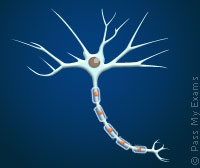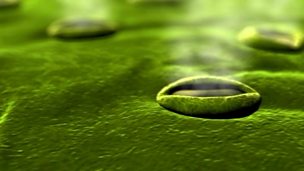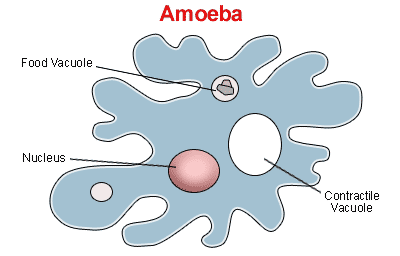Animal Cell Gcse Biography
Source:- Google.com.pk
All animals and plants are made of cells. Animal cells and plant cells have features in common, such as a nucleus, cytoplasm, cell membrane, mitochondria and ribosomes. Plant cells also have a cell wall, and often have chloroplasts and a permanent vacuole. Note that cells may be specialised to carry out a particular function.
Dissolved substances pass into and out of cells by diffusion. Water passes into and out of cells by osmosis.
Animal and plant cells
Function of cells which animal and plant cells have in common
part function
nucleus contains genetic material, which controls the activities of the cell
cytoplasm most chemical processes take place here, controlled by enzymes
cell membrane controls the movement of substances into and out of the cell
mitochondria most energy is released by respiration here
ribosomes protein synthesis happens here
Plant cells also have extra parts:
Extra parts of plant cells
part function
cell wall strengthens the cell
chloroplasts contain chlorophyll, which absorbs light energy for photosynthesis
permanent vacuole filled with cell sap to help keep the cell turgid
Make sure you can label diagrams of animal and plant cells, like these:
Specialised cells
Cells may be specialised for a particular function. Their structure will allow them to carry this function out. Here are some examples:
Examples of the functions of cells
Cell Function Adaption
cross section through a leaf cell
Leaf cell
Absorbs light energy for photosynthesis Packed with chloroplasts. Regular shaped, closely packed cells form a continuous layer for efficient absorption of sunlight.
root hair cell - has a head and tail
Root hair cell
Absorbs water and mineral ions from the soil Long 'finger-like' process with very thin wall, which gives a large surface area.
sperm cell - has a head and tail
Sperm cell
Fertilises an egg cell - female gamete The head contains genetic information and an enzyme to help penetrate the egg cell membrane. The middle section is packed with mitochondria for energy. The tail moves the sperm to the egg.
red blood cells
Red blood cells
Contain haemoglobin to carry oxygen to the cells. Thin outer membrane to let oxygen diffuse through easily. Shape increases the surface area to allow more oxygen to be absorbed efficiently. No nucleus, so the whole cell is full of haemoglobin.
You are likely to be given information, perhaps in a diagram, to help you to explain the adaptations of a particular cell type to its function.
Dissolved substances have to pass through the cell membrane to get into or out of a cell. Diffusion is one of the processes that allows this to happen.
Diffusion occurs when particles spread. They move from a region where they are in high concentration to a region where they are in low concentration. Diffusion happens when the particles are free to move. This is true in gases and for particles dissolved in solutions. Particles diffuse down a concentration gradient, from an area of high concentration to an area of low concentration. This is how the smell of cooking travels around the house from the kitchen, for example.
Examples of diffusion
Two examples of diffusion down concentration gradients
location particles move from to
gut digested food products gut cavity blood in capillary of villus
lungs oxygen alveolar air space blood circulating around the lungs
Remember, particles continue to move from a high to a low concentration while there is a concentration gradient.
In the lungs, the blood will continue to take in oxygen from the alveolar air spaces provided the concentration of oxygen there is greater than in the blood. Oxygen diffuses across the alveolar walls into the blood, and the circulation takes the oxygen-rich blood away.
Animal Cell Gcse Animal Cell Model Diagram Project Parts Structure Labeled Coloring and Plant Cell Organelles Cake


Animal Cell Gcse Animal Cell Model Diagram Project Parts Structure Labeled Coloring and Plant Cell Organelles Cake


Animal Cell Gcse Animal Cell Model Diagram Project Parts Structure Labeled Coloring and Plant Cell Organelles Cake


Animal Cell Gcse Animal Cell Model Diagram Project Parts Structure Labeled Coloring and Plant Cell Organelles Cake


Animal Cell Gcse Animal Cell Model Diagram Project Parts Structure Labeled Coloring and Plant Cell Organelles Cake


Animal Cell Gcse Animal Cell Model Diagram Project Parts Structure Labeled Coloring and Plant Cell Organelles Cake


Animal Cell Gcse Animal Cell Model Diagram Project Parts Structure Labeled Coloring and Plant Cell Organelles Cake


Animal Cell Gcse Animal Cell Model Diagram Project Parts Structure Labeled Coloring and Plant Cell Organelles Cake


Animal Cell Gcse Animal Cell Model Diagram Project Parts Structure Labeled Coloring and Plant Cell Organelles Cake


Animal Cell Gcse Animal Cell Model Diagram Project Parts Structure Labeled Coloring and Plant Cell Organelles Cake


Animal Cell Gcse Animal Cell Model Diagram Project Parts Structure Labeled Coloring and Plant Cell Organelles Cake
No comments:
Post a Comment